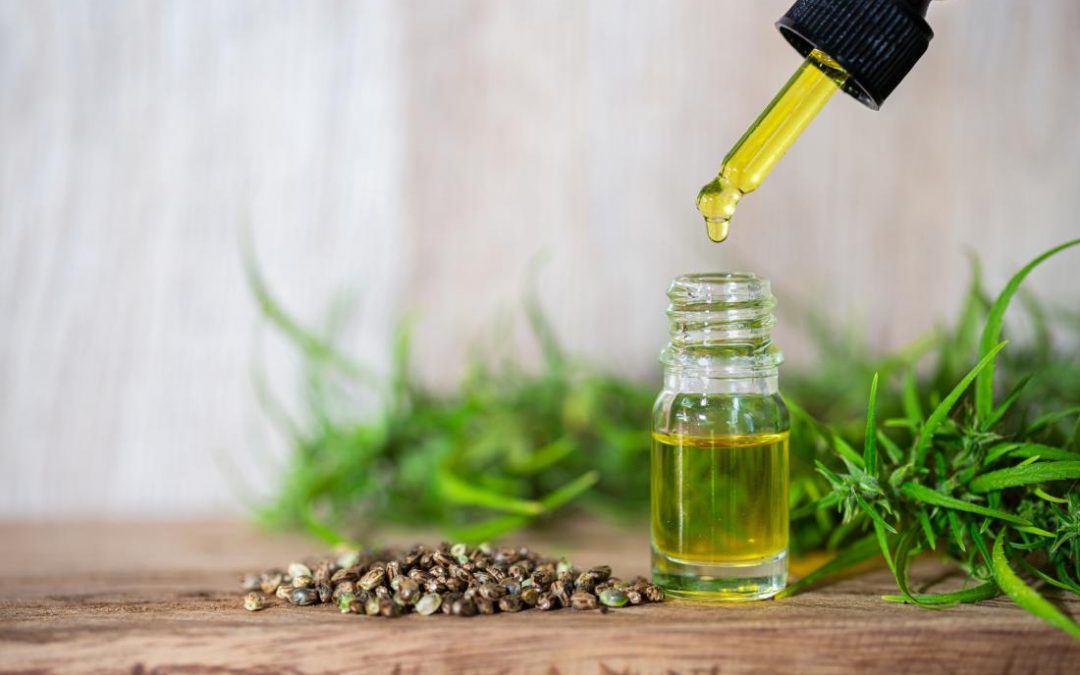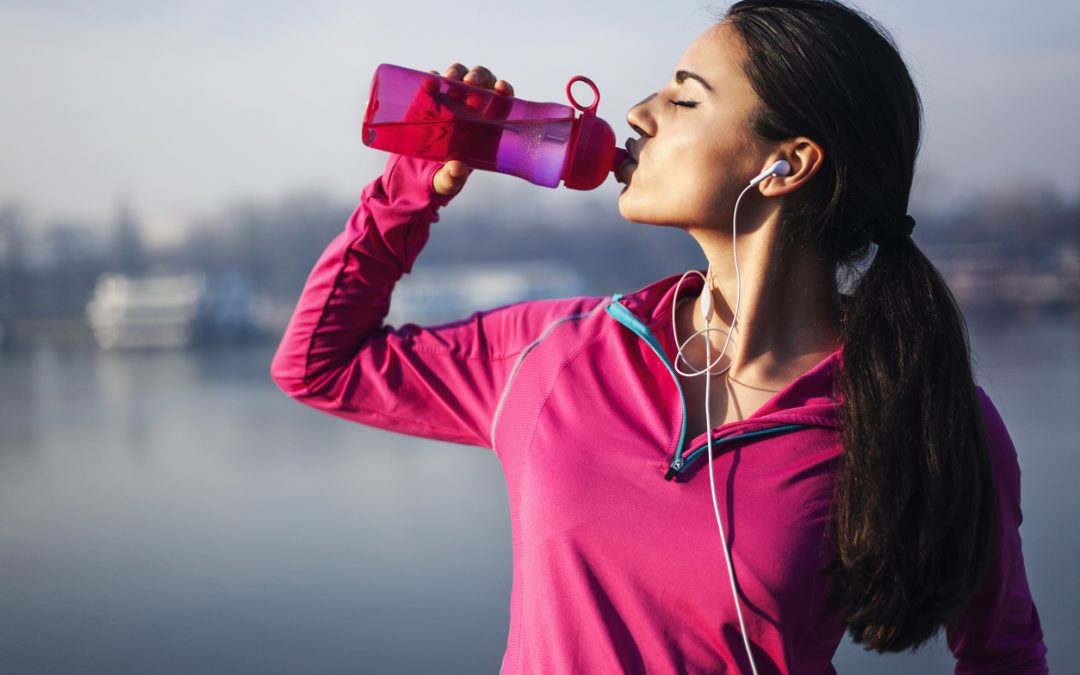
by Hydralive Therapy | Feb 17, 2020 | Lifestyle
The fun thing about goals is they’re so enjoyable to dream of. When they take shape in our imagination, fully finished with all the final touches and proudly out there for the world to see.
The problem is motivation. It’s fickle nature burns bright in the beginning, but quickly begins to fade as time goes on, leaving us stumbling in the resulting darkness where we can no longer see our way. And therefore, the goals remain unreached and unrealized. And we consider ourselves failures. Learn all about it with Hydralive Therapy!
Below, we will give you 7 ways to ensure that light never dies. So, you can dust off those old goals or pursue new ones with a renewed sense of purpose.
What are the Causes for Lack of Motivation? How to Motivate Yourself
# 1: Check On Your Motivation Daily
American author and speaker Zig Ziglar, once said: “People often say that motivation doesn’t last. Well, neither does bathing – that’s why we recommend it daily.”
Motivation is an emotion. And like any emotion, it ebbs and flows. The trick is to accept the ebbs as an inevitable event and ride the flows.
# 2: Remember Your Whys
Goalsetting is not a random event. You had a very good reason, or perhaps several, to set one. Having your goal visually illustrated is a tried and tested way to never lose sight of them. Create a vision board, write your whys down on the wall, make them a wallpaper on your devises. Whatever keeps them alive in your mind, and always front and center in your thoughts.
# 3: Don’t Let Everyday Life Distract You
Distractions are everywhere, and often it is hard not to get sidelined by the series of not-so-important chores and duties that steal our time and make us stray from our true path. Multi-tasking is an overrated skill that tires you out on your true purpose and doesn’t help you excel at anything.
# 4: Treat Actions Like Habits
Who here really enjoys brushing their teeth first thing in the morning with a mounting sense of adventure? No one I suppose. Yet we do it as soon as we wake up every day because it’s a habit. And habits don’t need much motivation or thinking.
# 5: Keep Short-Terms Actions In Your Head And The Joy Of Goal Completion In Your Heart
Goal completion is not a short sprint but a long-term journey. Like flying to an international beach destination, which means arranging tickets, booking hotels, packing bags, taking a cab to the airport, checking in etc. Breaking up that kind of experience into small, manageable tasks keeps the mind focused on what you need to accomplish first. Enjoying the visual of yourself on a hammock by the clear sea on a beach in the Maldives once you finally reach, will power those tasks with the promise of an ultimate reward.
# 6: Track Your Progress
Imagine a game of football being played with no one keeping score? How motivated will any of the players be then? Tracking your progress and celebrating even your smallest successes keep you excited about achieving bigger ones.
# 7: Eat Right, Sleep Well
Rest and nutrition have a direct impact on our emotions. And motivation is an emotion that springs from a sense of good health and well-being.
Good luck! If you have any questions, please check out our entire Menu!

by Hydralive Therapy | Feb 17, 2020 | Lifestyle
In today’s fast-moving world, the only way to keep up with progress is by multitasking. Or so we’re constantly being told.
There are more than 6 million webpages out there, offering a wealth of tips on how to become a better multitasker. Career consultants are listing multitasking as a necessary component in a jobseeker’s core skillset. Promotions are coming easier to those employees who are deemed to be more efficient at multitasking than their colleagues. Even stay-at-home moms are taking pride in their ability to multitask like a master juggler when they are cooking, looking after the kids and IM-ing their friends on social media at the same time.
Learn to multitask or fall behind in the race as an underserving also-ran, is the message we’re being fed in schools, homes and workplaces.
Yet, this premise couldn’t be further from the truth.
Multitasking isn’t simply an overrated skill. It’s inefficient, ineffective – and sometimes, even downright dangerous.
Why? Because human brains are not designed to multitask. And here’s a very short science lesson to explain this.
When we’re multitasking, we’re using what is known as our short-term memory, which has a very limited capacity to hold information. Studies in the 1950s concluded that our short-term memory can hold up to 7 pieces of information at any given time. But modern research has proved it’s just 2-3. Learn how to keep your focus with Hydralive Therapy!
So, when we’re overloading our short-term brain with multiple tasks, all it can do is let go of the other pieces of information to make space for the new one. In a vicious cycle of accept-and-discard – accomplishing nothing of real value.
One of the things we want to encourage you to think about this week is how you can bring more focused time in your life and accomplish the tasks that really matter. And how you can do it really well by doing just one thing at a time.
Multitasking Can Make You Lose…Um…Focus. How to Stay Focused when Multitasking
# 1:Discourage Novelty Bias
This is a fascinating piece of finding that proves how multitasking comes with multicosts. When we’re working on, say a project on our computer, with a phone nearby and constant access to emails and instant team share platforms where our colleagues are constantly pinging us, we can concentrate on the project for just 35-40 seconds before we get distracted and lose focus.
Something called a novelty bias in our brains actually seeks out these distractions for a quick dose of dopamine, and we can’t resist the urge to keep checking our phone for Facebook notifications, or refresh our email inbox, or feel the urge to respond to a colleague instantly – instead of focusing only on the most important task at hand.
The only way to train our brain in this scenario is to intentionally reduce the environmental chatter. Turn off social media notifications for the time being or keep your phone facing upside down. Tell yourself you will not check on your emails until after you’ve completed the priority task you are working on. This way, it will get so much easier to focus and increase your productivity in any meaningful way.
# 2: Listen To White Noise
If you work in a busy office, it is difficult not to tune in to the conversations and events happening all around you. Listening to white noise while you focus on your work is an extremely effective way to shut out these ambient distractions.
White noise is a sort of soundtrack that combines all different frequencies of sound with equal intensities at once. And since white noise contains all frequencies, it has the capability to mask any interrupting sounds. You will soon tune out the monotonous sound of waterfall or rain or whatever the white noise is masked with, and find you’re feeling more focused – and only focused – on what you’re doing at the moment.
# 3:Take Short Breaks
Break the stranglehold of distraction on your ability to focus by giving your brain the reward of pre-planned breaks. Vigilance decrement, or losing focus over time, is a proven brain behavior, and short breaks in the middle of a long task leaves you feeling reenergized and ready to return with a fresh perspective each time.
# 4:Doodle To Improve Your Focus
Sounds counterintuitive, right? But research has proved that doodling increases focus, helps in memory retention and makes it easier to digest information being imparted audibly. Surely, a huge help if you’re stuck in a long, boring meeting where you’ll likely to tune out or, even worse, fall asleep in the middle of a dull presentation?
(An interesting aside: apparently, 26 of 44 of our American Presidents doodled. Theodore Roosevelt doodled animals and children. Ronald Reagan doodled cowboys and football players. John F. Kennedy doodled dominoes.)
# 5: Climate Control Your Environment
Feeling too hot or too cold can impede your attempts to concentrate. A study from Cornell University has found employees to be most productive and making fewer errors in an environment that is somewhere between 68 and 77 degrees. Another study from the Helsinki University of Technology in Finland pegs the temperature at a definitive 71 degrees.
Have more questions about staying focused? Maybe try out Our Menu to see what might help you keep your focus!

by Hydralive Therapy | Feb 6, 2020 | Wellness
Let’s talk about CBD Myths! (cannabidiol).
Some call it the most misunderstood compound in the world today – and yet, the billion-dollar industry is sparking such an explosion of interest in the United States that by 2024, the sale of CBD products is expected to touch $ 20 billion.
From anxiety and inflammation to MS, heart health and even cancer, CBD is showing its promise as a curative support for a variety of mental and physical diseases.
Some scientists even believe that CBD oil will prove as life-changing as penicillin in the 1940s.
So, what’s the delay?
In the technology-driven environment we live in today, why can’t CBD simply time-travel into the future and establish itself as the wonder drug it is slated to be right now?
The answer is two-fold: a) pending further research and b) existing fear in the minds of people that CBD is actually a drug.
We’ll set aside the need for more scientific findings for the purpose of this article. We’ll focus on the fear factor instead. Because lack of knowledge engenders fear, and that fear in turn create myths and misinterpretations among consumers that take years sometimes to clear up.
Below, we have listed 7 of the most common misconceptions about CBD, to get the ball rolling on this conversation at Hydralive.
Keep reading!
Learn about CBD Facts and Myths!
CBD Myth # 1: It’s Related To Marijuana, So It Must Be An Intoxicating Substance
No. CBD is not intoxicating. The compound that produces a stoner’s high when using marijuana is THC (tetrahydrocannabinol). It is the notoriety of THC that has caused so much confusion and overshadowed the potential benefits of CBD as a naturally occurring, therapeutic product.
Sure, CBD and THC are both compounds (cannabinoids) extracted from the cannabis plant. But they impact different receptors in the brain. Simply put, THC affects what is known as CB1 receptors, which produces a feeling of intoxication. CBD does not.
In fact, CBD helps to counteract the anxious, paranoid feelings that THC sometimes creates and works as an anti-psychotic.
CBD Myth # 2: It’s Illegal In The United States
You can legally buy CBD online across the US, as long as it is derived from industrial hemp (containing THC below 0.3% by weight). But some states are a bit more friendly than others when it comes to CBD. Find out more, if you’re interested in the current position of your own state, by clicking HERE.
CBD Myth # 3: It’s Addictive
CBD in any form is not addictive. In fact, CBD may actually help treat certain substance addictions and minimize the unwanted side effects of pain management medications without being an addictive agent itself.
CBD Myth # 4: It’s Nothing More Than A Lifestyle Fad
We’d say this. Incorporating any natural wellness product into everyday lifestyle is a fad. Social media has changed the world irrevocably, and thanks to tastemakers, influencers and trendsetters in the social space commanding millions in followership, it is easier than ever to reach and bandwagon people in new and imaginative ways.
True, that CBD is being enjoyed today in everything from chocolate, lollipops and lattes to bath bombs, face masks and body lotions. But look back just a year or so, and you’ll remember how turmeric for example, with its endless healing properties, became trendy as a popcorn topper, cheesy dip and smoothie ingredient.
CBD Myth # 5: It’s Biggest Fans Are Millennials
CBD consumers are an average age of 40 and over. Moreover, they have higher education, holding college degrees, and are more likely than non-consumers to be responsibly employed full time.
CBD Myth # 6: I Tried CBD, And I Felt Nothing
Unlike THC, which impacts the way you feel almost immediately, CBD does not work that way. You don’t experience a high. And depending on why you’re taking it, you might not notice any significant changes until you’ve been supplementing daily for a few weeks.
The best way to know if CBD oil is “working” is to know why you’re taking it before you start. Maintain a record of your symptoms as time goes on, and you’ll find it easier to understand if the supplement is a good fit for you.
CBD Myth # 7: All CBD Products Are Equally Effective
In an unregulated market, it is important to do your research well, and choose products from the most reputable suppliers. No matter what it says on the label.
Check for full disclosure on the COA (Certificate of Analysis) that all reputable CBD companies use. The COA tells you everything you want to know about the quality of the CBD and the information is verifiable. Also be skeptical of international manufacturers. Tests have proven that some of them contain trace amounts of CBD – or none at all! If you have any questions about us, please check out Our Menu!

by Hydralive Therapy | Jan 31, 2020 | Health
February is American Heart Month – and the message coming through this year is a strong wake-up call to the fact that not only do an estimated 630,000 Americans die of heart-related diseases annually, they can be afflicted at any stage and any age in their lives!
It’s the perfect time therefore, to learn about your own risks for heart disease, and the steps you need to take to make sure you’re not another victim of this leading cause of fatalities in the country. Learn more with Hydralive Therapy!
We’re particularly interested in telling our readers about something they may not have considered before: how hydration is a key factor in maintaining heart health.
What is the Direct impact of Dehydration and Heart Health?
So, here are the facts:
# 1: Dehydration Exhausts The Heart
When your body is not getting proper hydration, your blood volume lowers and thickens as blood consists mostly of water. And when blood volume drops, your vessels tighten and heart rate increases to compensate for that drop – which isn’t good news for optimal functioning of the organ.
# 2: Dehydration Increases Risks Of Stroke
Stroke is caused by the lack of optimal blood reaching the brain, and when you consider how lack of hydration lowers blood volume from the above point, the connection is pretty obvious.
# 3: Dehydration Increases Chances Of Fatal Coronary Heart Disease
The connection between dehydration and coronary heart disease (CHD) was proven in a study that found this astounding fact: sufficient hydration reduces risk of CHD by 59% in women and 46% in men. What’s more, it you drink just five glasses of more water per day, it can make a huge difference!
What Can You Do?
Those most at risk for dehydration are the elderly, people with chronic illnesses, children and athletes. But dehydration can strike anytime and during any season, without you even knowing you are dehydrated.
This is why a regular regimen for hydration has to become a part of your daily lifestyle.
Read our article on how to stay hydrated round the year by clicking HERE, HERE and HERE.
At a glance though, here are some quick facts you can scan through on this page to get some necessary facts:
• Women need about 11 cups (91 ounces) of total daily fluid intake (which includes healthy beverages and water-containing foods).
• Men need about 15.5 cups (125 ounces) total daily fluid intake (which includes healthy beverages and water-containing foods).
• Drinking the recommended eight glasses of water a day is acceptable if 25 % of daily fluid intake is coming from food and other drinks.
• Among water-rich vegetables that you can add to your diet are: lettuce (96%), celery (95%), bok choy (95%), radish (95%), cucumber (95%), zucchini (95%), tomato (95%), green bell pepper (94%) and asparagus (93%) and cabbage (92%).
• Meat naturally contains about 75% water but can vary depending on the cut. Remember also that meats lose water content in the cooking process.
• When choosing fruits, look for water-rich ones such as watermelon (92%), strawberries (90%), grapefruit (90%), cantaloupe (90%), pineapple (87%), oranges (87%) and raspberries (85%).
• Beverages like coffee and soda may increase your daily water intake, but their caffeine content also acts as a diuretic, which means you can end up losing more fluids too. Keep that in mind when you think of them as a source of hydration.
• Meat naturally contains about 75% water but can vary depending on the cut. Remember also that meats lose water content in the cooking process.
• Increase your fluid intake if you are an athlete or exercise frequently, as you’ll lose more water than others with more sedentary lifestyles through exertion and sweat.
• Hot weather calls for more fluids, but dehydration can occur in winter months too.
• Women who are either pregnant or breast-feeding need additional fluids to stay hydrated.
• IV therapy is a quick and easy way to increase hydration in the body. This is an extremely efficient system as none of the essential components, like minerals and nutrients, are lost in the digestion process and your body enjoys full benefits from the transmissions.
Click HERE to know more about IV therapy options to counter dehydration. If you have anymore questions, try checking out Our Menu!

by Hydralive Therapy | Jan 13, 2020 | Health
It’s no secret that we women carry our lives in our handbags. Riffle through any woman’s handbag, and the contents in there will tell you a short, succinct story of who she really is.
In this article, we’re very interested to know what’s in yours – but not because we’re inquisitive about the kind of lipstick you buy or the perfume you wear. We just want to make sure you’re kitted out with all the tiny lifesavers that can keep you healthy through the cold, winter months. We at Hydralive Therapy will help you out!
So here goes:
What are Good Items to Keep in Your Car for Winter?
# 1: Hand Sanitizers
It’s flu season folks, and germs are festering everywhere. Whatever you touch, like a door handle or an innocent-looking office file, could be contaminated with sick-making germs, and a small bottle of hand sanitizer could stand between you and being laid up for the next 7-10 days with high temperatures, cough and cold.
Just, remember to use it!
# 2: Lip Balm
Lip balms or chapstick, as millions of women will tell you, is more than just a hydrating, soothing, emollient-rich beauty picker-upper. It’s a lifesaver, a mood enhancer, and a best friend they couldn’t imagine stepping out of the house without.
This co-dependency has reached such gigantic proportions that a debate rages on about lip balm’s so-called “addictive” properties. Experts, however, have discounted this theory, citing an `emotional’ factor that has many women forming an attachment to the tube.
Even if you don’t use them regularly, lip balms can literally save your day during winter months if you suddenly find your lips are preparing to dry out and flake (and you know that deeply uncomfortable feeling!).
# 3: Lotion Facial Tissues
If you have a runny nose this winter, stop using whatever tissue is close at hand. Ordinary tissues create painful friction with the skin after repeated use, and before you know it, your nose is red and scratched, making further wiping a painful process.
Switch to soft, facial tissues with lotion that lock in the moisture and save your nose from damage. Brands like Puffs and Kleenex (the ones with lotion and aloe) first come to mind…
# 4: Zinc Lozenges
Zinc is a mineral that keeps the immune system strong, during winter months. In fact, some studies have found that zinc lozenges may reduce the duration of cold, perhaps by as much as 50%, and may reduce the number of upper respiratory infections, particularly in children.
# 5: Echinacea Capsules
Echinacea, a health-promoting herb which was used by Native American tribes, stimulates the immune system and gives you the power you need to fight flus and colds. Research shows it increases the number of white blood cells in the body, which fight infections.
# 6: Nose Masks
No, they don’t look cool. But if you’re in a crowded space, like a bus, train or airplane cabin, this fabric barrier can give you some protection from people coughing and sneezing into the air you’re directly breathing. And they’re so small, you can stuff them into a handbag pocket and forget about them – until you actually need one.
# 7: A Bottle Of Water
Keep a small bottle of water in your handbag at all times. We cannot stress enough on the importance of staying hydrated to fight germs and infections in winter.
Good luck! If you have further questions, please be sure to checkout Our Menu!





